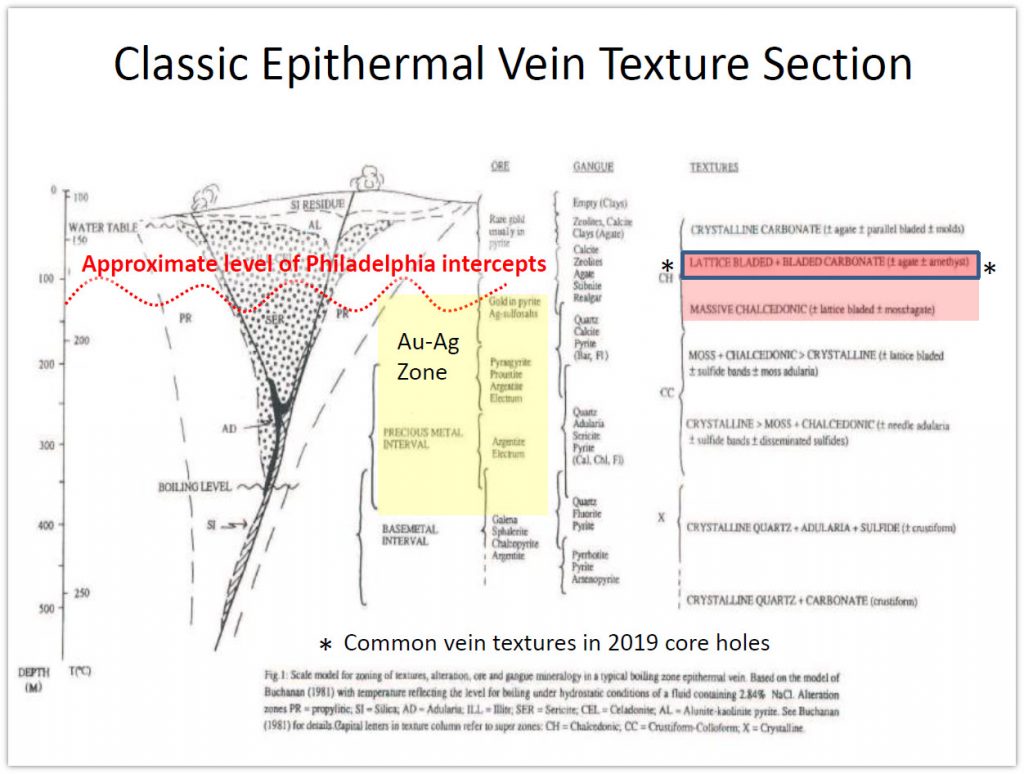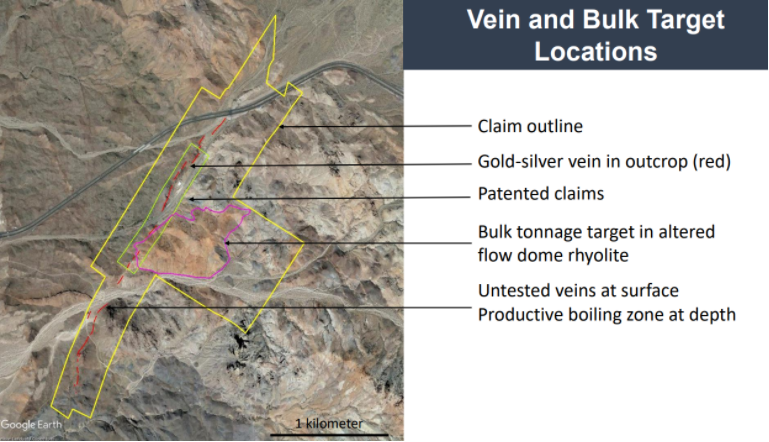
Assay results released by Arizona Silver (TSXV: AZS) last month indicate a larger than expected bulk tonnage target on their Philadelphia property. Deeper diamond drilling across the high-grade vein is needed to confirm the extent of the mineable system.
New potential in a historic mining district
Arizona Silver is a junior explorer focused on the southwest US. Their current drilling is on the Philadelphia property, a high-grade gold and silver vein in Mohave County in northwestern Arizona. The property is at the north end of the historic Oatman Mining District where the Oatman Mines produced over 1.5M oz. Au, and where the Moss and Gold Road mines are currently operating.
The district was mined most heavily from the 1890s until 1942 when area operations were deemed unessential to the war effort. This history, combined with Arizona having been less explored than neighboring Nevada, has led some to believe the district may host unexplored resources while still having solid infrastructure.
Arizona Silver began exploration in 2019/20. Drilling intersected a high-grade vein (Au: 41.6 gpt across 0.76m, 23.5 gpt over 2.3m, 33.6 gpt over 2.4m, 9.3 gpt over 10.8m), with a strike length extending 3km. A drilling campaign completed in summer 2021 discovered bulk tonnage above the vein, which the latest results suggest extends to a depth of over 100m.
According to Greg Hahn, VP of Exploration, “the Philadelphia Property is one of the few gold systems remaining in the Western USA that has never been evaluated using modern exploration concepts…. Discovering the bulk tonnage target answered my question as to why we see such a remarkable alteration feature at surface. All this project needs is drilling to demonstrate its real potential.”

Estimating the extent of the epithermal system
The initial exploration focus was based on historical production in the region, characterized by veins as opposed to bulk zones. The orebody at the Oatman Mine, for instance, assayed less than 1 gpt at narrow widths up to the boiling zone at about 65m. Beyond the boiling zone, grade went up dramatically to a depth of 300m at +1 oz/ton over a 10m width.
Arizona believes drilling to date has been only at the top of the boiling zone. Drilling results are consistent with classic epithermal veins, with a large breccia extending above the high-grade system. “We just need to go deeper down into the system to get into the heart of the boiling zone”, says Hahn.
The schematic of the epithermal system at Philadelphia depicts a high-grade vein, separating basement from the rhyolite complex which hosts the bulk tonnage target.

Schematic of bulk tonnage target. (Source: Arizona Silver)
Arizona estimates the size of the initial vein target block resource area as 400m x 200m x 5m. The average vein grade has been just over 8 gpt Au but, based on the Oatman epithermal model, the expectation is that both grade and thickness will increase as they continue to drill at depth.
When initially targeting the vein, Arizona didn’t expect a mineable grade in the bulk material. The initial bulk target is estimated in the range of 400m x 200m x 100m with +1 gpt Au. Arizona cites the potential total bulk zone size as 600m x 600m x 100m.
What to expect moving forward
Targets for continued drilling include the high-grade vein system, the bulk tonnage stockwork zone, and an undrilled southern extension to the vein system.
To date, the RC drill has been limited to points on the northern and southern edges of the initial 600m strike. Roads and access pads will need to be completed before samples along the full high-grade zone can be drilled.
Meanwhile, recently completed financing will provide the budget to drill step-out holes and continue along the down dip of the main vein. Assay sections and proposed holes can be found here.
Philadelphia Project Presentation Video



 Follow us on Twitter
Follow us on Twitter Become our facebook fan
Become our facebook fan










Comments are closed.